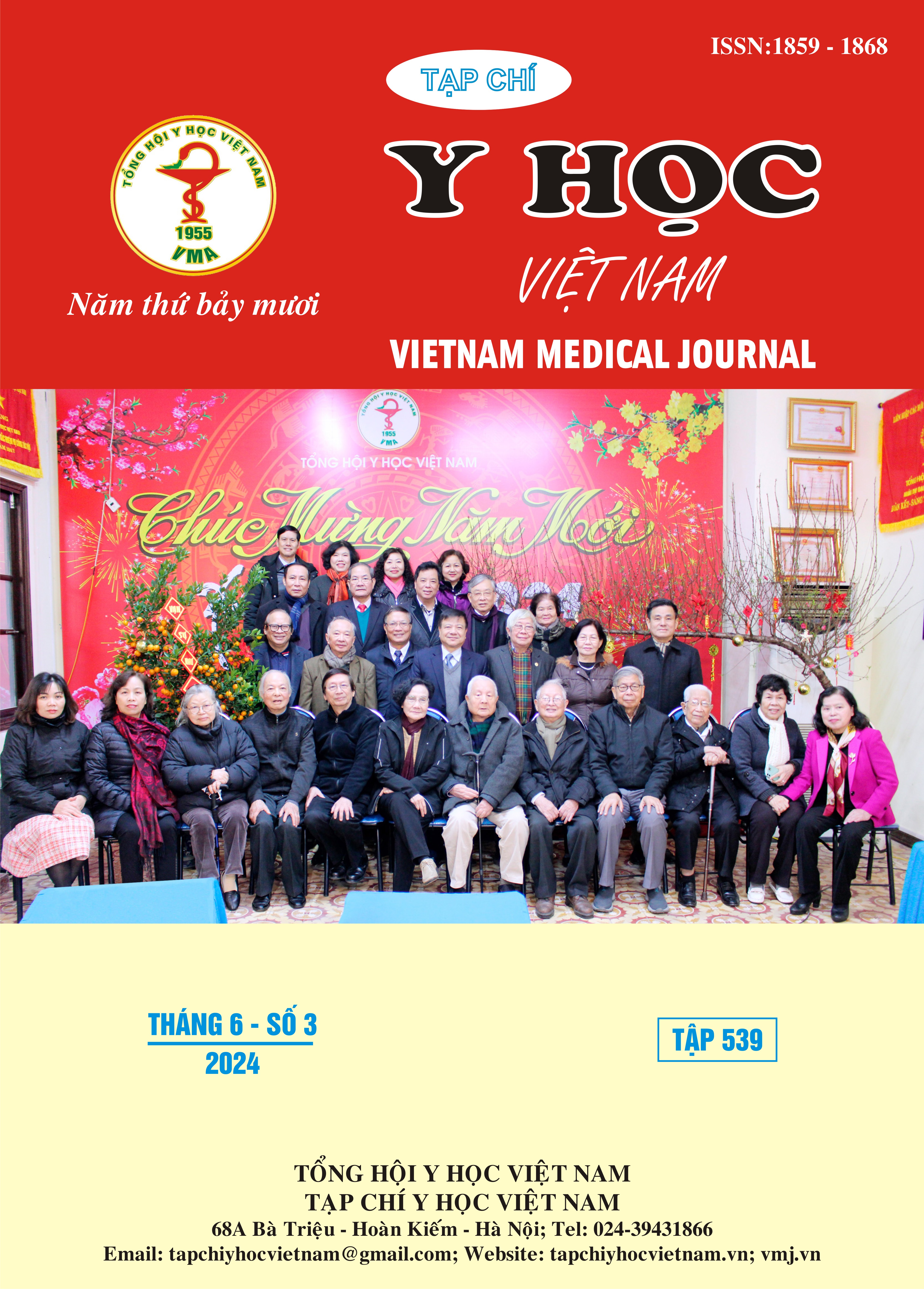ROLE OF NURSING IN PERCUTANEOUS DRAINAGE INTERVENTION FOR HEPATIC ABSCESS PATIENTS TREATED AT MILITARY CENTRAL HOSPITAL 108
Main Article Content
Abstract
Objective: Hepatic abscess is an acute localized inflammation of the liver, and percutaneous drainage is required in 50-60% of cases. Our study evaluates the role of nursing in performing this intervention. Subject and Methods: A retrospective study was conducted on 121 patients with hepatic abscesses undergoing percutaneous drainage at Military Hospital 108 from 1/2018 to 8/2023. Based on medical records, we assessed nursing activities before, during, and after the intervention, focusing on the procedure's success and safety. Results: 59.5% of patients underwent one-time drainage, with an average fluid volume of 69.5 ml. The procedure was safe, with 21.5% experiencing pain at the needle puncture site and no severe complications. Nursing care and health education activities yielded positive results in many aspects, including complication monitoring and timely management (95.0%); medication dispensing and adherence (91.8%); dietary, lifestyle, and rest guidance (91.7%); and proper patient medication education (98.3%). However, some aspects, such as changing bed linens and assisting with personal hygiene (83.4%), counseling for patient understanding of their condition, psychological care, and reassurance (85.7%), showed limited results. Conclusion: Nursing activities improve the effectiveness and safety of hepatic abscess drainage. Therefore, regular training and quality improvement in nursing practices are needed to enhance treatment outcomes further.
Article Details
Keywords
áp xe gan, chọc hút ổ áp xe, vai trò của điều dưỡng
References
2. Đoàn Anh Vũ, Nghiên cứu đặc điểm lâm sàng, cận lâm sàng và đánh giá kết quả điều trị bệnh áp xe gan bằng phương pháp nội khoa hoặc chọc hút mủ tại bệnh viện đa khoa thành phố Cần Thơ và bệnh viện đa khoa Trung ương Cần Thơ năm 2016-2017. Tạp chí y dược học Cần Thơ, 2018. 13-14: p. 54–62.
3. Nguyễn Công Long, T.V. Sơn, Đánh giá kết quả điều trị ổ áp xe gan trên 5 cm bằng Sonde dẫn lưu. 2021. 507(2).
4. Nguyễn Thị Huyền Trang, et al., Đặc điểm lâm sàng, cận lâm sàng ở bệnh nhân áp xe gan điều trị tại Bệnh viện Trung ương Quân đội 108. Tạp chí y dược lâm sàng 108, 2024. 19(1).
5. Blessmann, J., et al., Epidemiology of amebiasis in a region of high incidence of amebic liver abscess in central Vietnam. Am J Trop Med Hyg, 2002. 66(5): p. 578-83.
6. Lardiere-Deguelte, S., et al., Hepatic abscess: Diagnosis and management. J Visc Surg, 2015. 152(4): p. 231-43.
7. Roediger, R.,M. Lisker-Melman, Pyogenic and Amebic Infections of the Liver. Gastroenterol Clin North Am, 2020. 49(2): p. 361-377.


